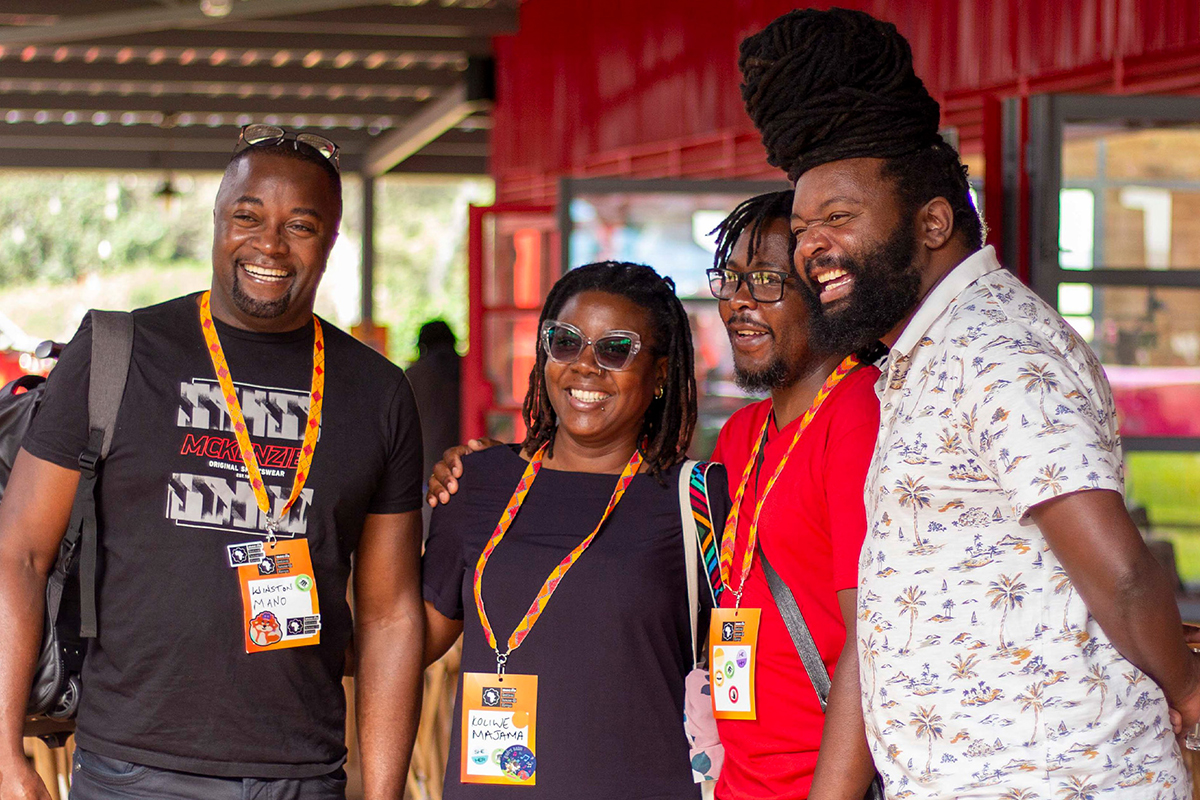We used to talk about the next era of the internet at dinner conversations; now we talk about technofeudalism, platform extractivism and the attention economy taking over every aspect of our lives. We talked about moving to peer-to-peer platforms in lieu of big tech social media; now we talk about burner phones and cleaning up our Instagram to be able to enter China or the U.S. We thought that web3 could be a real alternative; but have come to accept that blockchains seem to be far more useful to financialize the world rather than to democratize it.
But there’s new reason to hope. The grand idealism of the free and open internet might be over for now, but in its place falls a more practical mindset. Just like Silicon Valley’s entrepreneurs are entering their “Hard Tech” era, the people building web alternatives are also entering their Post-Naive Era: building digital infrastructure based on a different set of values, structures and ideologies to serve their communities, and establish new conditions for how things operate, are produced and circulated.
Welcome to the Post-Naive Internet Era
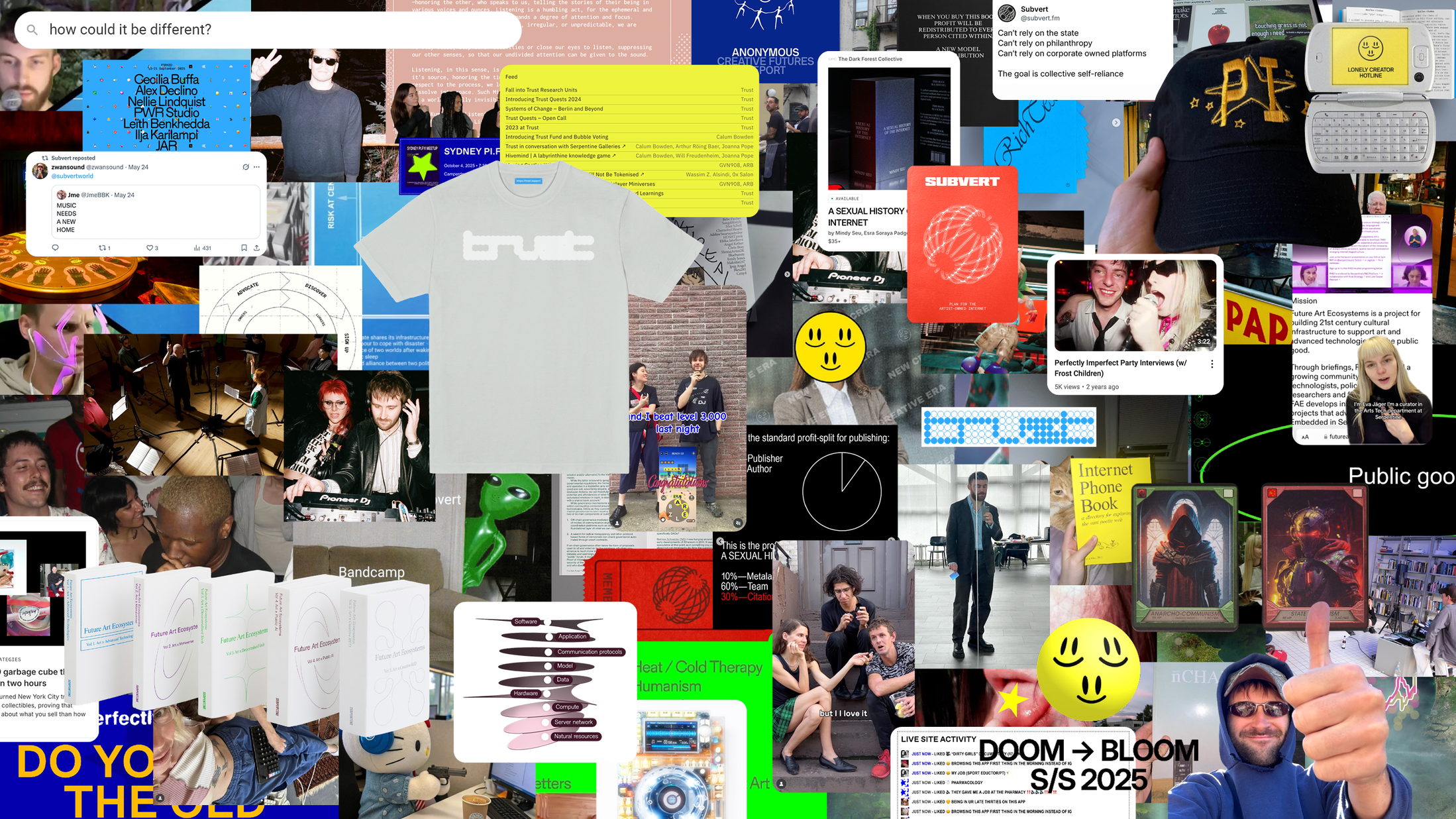
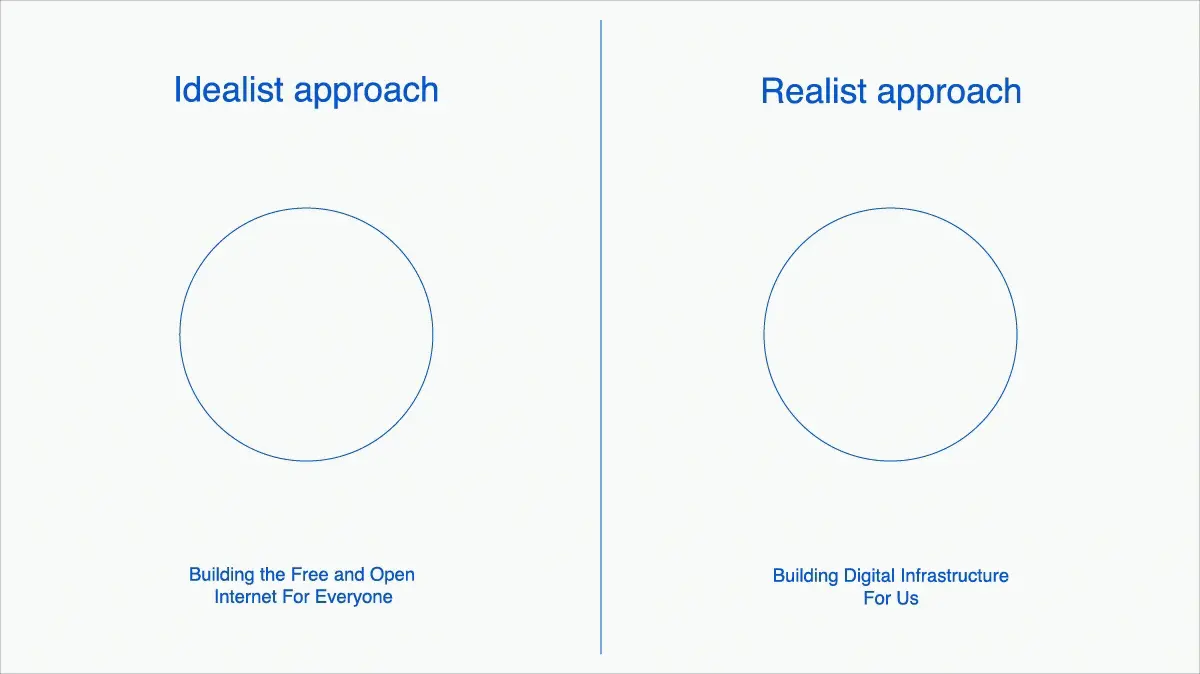
Instead of fighting for grand alternatives like the free and open internet for everyone, the post-naive generation builds digital infrastructure primarily for their communities and their needs.
What is the post-naive generation?
It’s not so rare. Just about everywhere you look, someone is trying to build an alternative. Austin Robey is the founder of Subvert, a cooperatively owned music platform. With a background in architecture and a passion for music, the NYC-based founder has spent the last 10 years trying to solve the question of how digital platforms for artists and creatives can be sustainable.
When Bandcamp was sold in 2022, it clicked for him. Even then, most musicians had given up on the idea that Spotify could ever help them make an income (its average payout is $0.003 per stream, and only the top 1% of artists really benefit) Meanwhile, Bandcamp was held up as the platform where musicians felt their work was valued. It was a place where the prices were fair and the founders were in touch with their community. When it was sold to Epic Games, the behemoth company behind triple A games like Fortnite, the shock was deep.
And yet this story has been written a million times before: a platform starts with the best intentions in mind, takes on venture capital and comes to realize that VCs are business people and want their money back. Could it be any different? Only if it was structurally different. So Austin wrote a manifesto and started to build Subvert in the summer of 2024.
Subvert, which is set to launch later this year, now has more than 10,000 members, comprising artists, independent labels, and supporters. Each own a part of the platform that will launch later this year. Whether it will be a success, find users, create revenue or even ROI for its co-owners is up in the air; what matters is that it relies on a radically different ownership model. This structural innovation in turn shapes the way decisions are being made, the platform is being built and the community it serves gets involved.
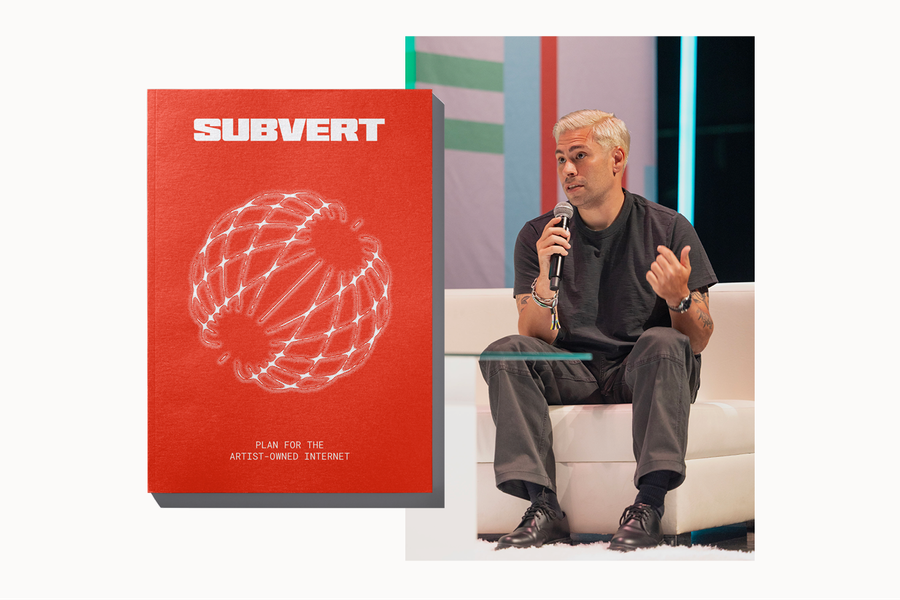
Austin Robey founded Subvert to create a music platform on a radically different ownership model than traditional startups. Every member/investor receives a physical zine that lays out Subvert’s plan for a cooperatively owned Bandcamp.
Austin is part of what we call the post-naive generation of internet builders. They’re a small but growing crowd of people building structures shaped around the core values of their community. Rather than metaverses, aimed at creating new environments for our entire digital existence, they can be thought of as miniverses that serve the needs of their specific communities and subcultures.
Building in the cracks of the internet we’ve come to accept as reality
We’ve identified four layers on which these miniverses are built differently than in previous eras:
1) On a structural level, as with Subvert being collectively owned by its members rather than by venture capitalists.
2) On a value level, such as release platform Metalabel, which is built for creators to collaborate and split earnings, rather than competing against each other.
3) On a design level, such as newsletter-turned-social-network Perfectly Imperfect, which designs its feed around human-created recommendations rather than algorithm-optimized content.
4) On a community level, for instance Berlin-based online community and physical hub Trust, which experiments with decentralized governance structures to evolve along its community’s IRL needs.
“We might have traded idealism for realism, accepting the internet of today for what it is.”
These projects aren’t driven by nostalgia, or even growth. The point is that influencing the world today is not about creating scale; it’s about developing the conditions that determine how culture is created, distributed and monetized. As the culture wars are now being fought over digital infrastructure, we need to build it on a radically different set of principles to serve our needs.
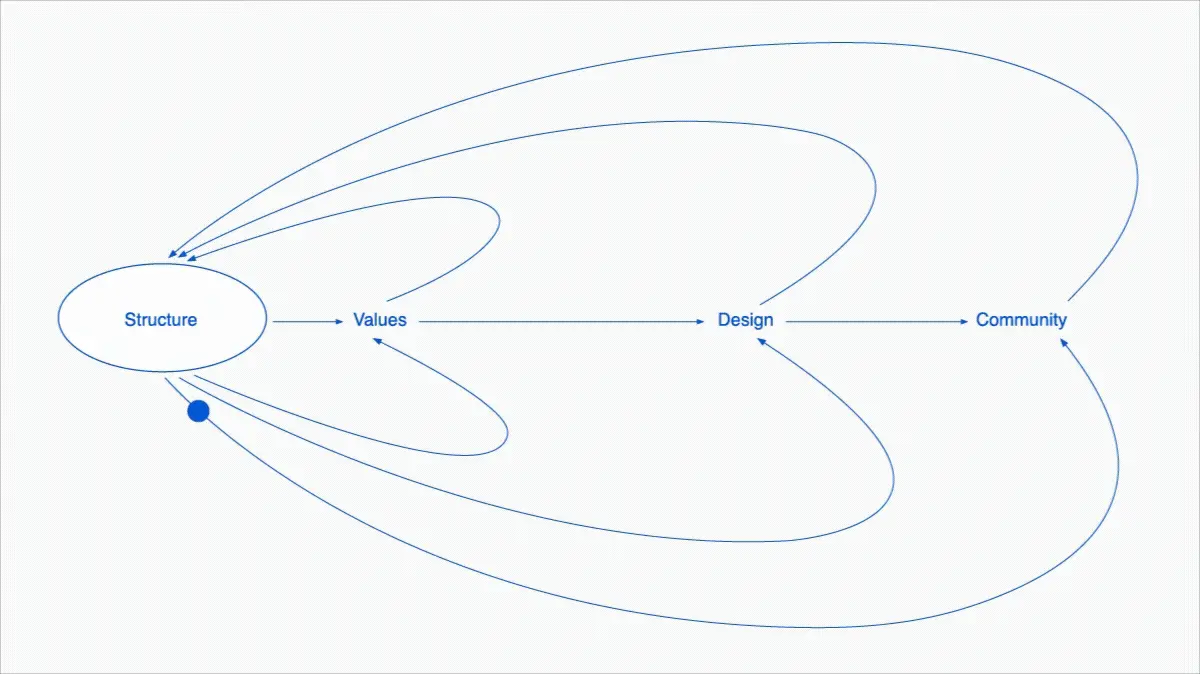
Post-naive internet projects can be thought of as miniverses that are inhabited by a community. They aim to build alternative vehicles to serve their needs on a structural, value, design and community level.
Mapping the post-naive generation
In 2025, we’re seeing many vehicles dedicated to creating new places for subcultures and communities to thrive. To understand what it is they have in common, and how they connect to one another, we started to map the projects and view them as an emerging ecosystem built on a shared mindset.
A map of the post-naive internet era, an ecosystem of media, hubs, catalysts and platforms that build digital infrastructure to change the status quo.
This Post-Naive Internet Map is split into four categories:
- Media
A new wave of books, podcasts and zines act as entry points into this ecosystem, experimenting with new media formats, distribution models and ownership structures to share knowledge and connect with audiences. Take for example A Sexual History of the Internet, a 700+ page artist book by Mindy Seu and Laura Coombs that gathers anecdotes, artworks, and historical artifacts about how technology has been shaped by sexuality and which splits a part of the proceedings with the people who have inspired it. Projects like The Internet Phone Book (a yellow page physical directory of URLs that act as a portal to the “poetic web”), Isolarii (a subscription-based publisher of pocket-sized “radical knowledge” books) or Joshua Citarella’s Doomscroll podcast are similar endeavors in creating media on a different set of principles than what the mainstream model suggests. - Hubs
Once you’ve discovered this new world through media, IRL spaces and digital communities connect you with likeminded peers. One such space is Trust, an IRL space in Berlin and network of “utopian conspirators” that experiment with creative, technical and critical projects. It’s at Trust where we, the authors of this article, initially met and whose community, projects, conversations and events inspired our thinking. Other critical nodes are places like Softer, a network aiming to change the narrative that tech is hard, built on feminist consciousness; Index, a network of spaces in NYC, India, Japan and Amsterdam, built on values of creative generosity and care, or NYC’s School for Poetic Computation that emphasizes open-source methods, accessibility, and diverse participation. - Catalysts
A growing number of organizations are forming that support the creation of new cultural infrastructure. A prime example is Serpentine Arts Technologies, the experimental R&D arm of the London-based art institution. By working with artists such as Ian Cheng (who now runs AI startup Opponent Systems), Holly Herndon and Mat Dryhurst (who launched several digital platforms for artists such as Spawning) or Danielle Brathwaite-Shirley (who uses interactive video games as her primary medium), they’re breaking up borders between artists and digital infrastructure and enable more diverse voices to join the conversation. In a similar spirit, new accelerators like Restless Egg provide the emerging type of the “artist-founder” with early stage capital and mentorship to bring their experimental prototypes to life beyond the gallery walls. - Platforms & Protocols
At the final stage of this cycle we see the emergence of new platforms that enable large groups of people to participate in the post-naive internet era. Platforms like Metalabel, launched by a group surrounding former Kickstarter founder Yancey Strickler, aim to provide an alternative to the dominant ethos of the creator economy by letting creators release, sell, and exhibit work across mediums while allowing for distributed revenue models via “splits,” which are built on shared treasuries that rethink the distribution model creators and publishers rely on. On a protocol level, platforms such as Nina aim to empower independent artists by providing a transparent, decentralized ecosystem for direct fan-to-creator sales; and Bluesky’s AT Protocol builds a new basis for social networks where users retain control over their data and curate their algorithms.
Why do we need a map?
The purpose of creating this map isn’t to navigate it. You can do that yourself, and we urge you to dive deep. Many of the projects we featured here point towards entire universes of crypto protocols, the poetic web, platform cooperatives, alternative social networks, art, music and media scenes in which thousands more experiments, ideas and prototypes bloom. It's the Internet you won't see if you just stay on the big platforms.
What we want to show with our map is that the post-naive internet exists as a mindset within the endless sea of today’s internet. Each of the projects carves out an island rather than trying to change the whole sea. But these islands aren’t lonely; they are populated, interconnected and communicating with one another as they’re building alternatives to the status quo.
We might have traded idealism for realism, accepting the internet of today for what it is. A mirror rather than a portal. But more than ever, we believe that change can happen through digital infrastructure, that it has the ability to make our values real.

